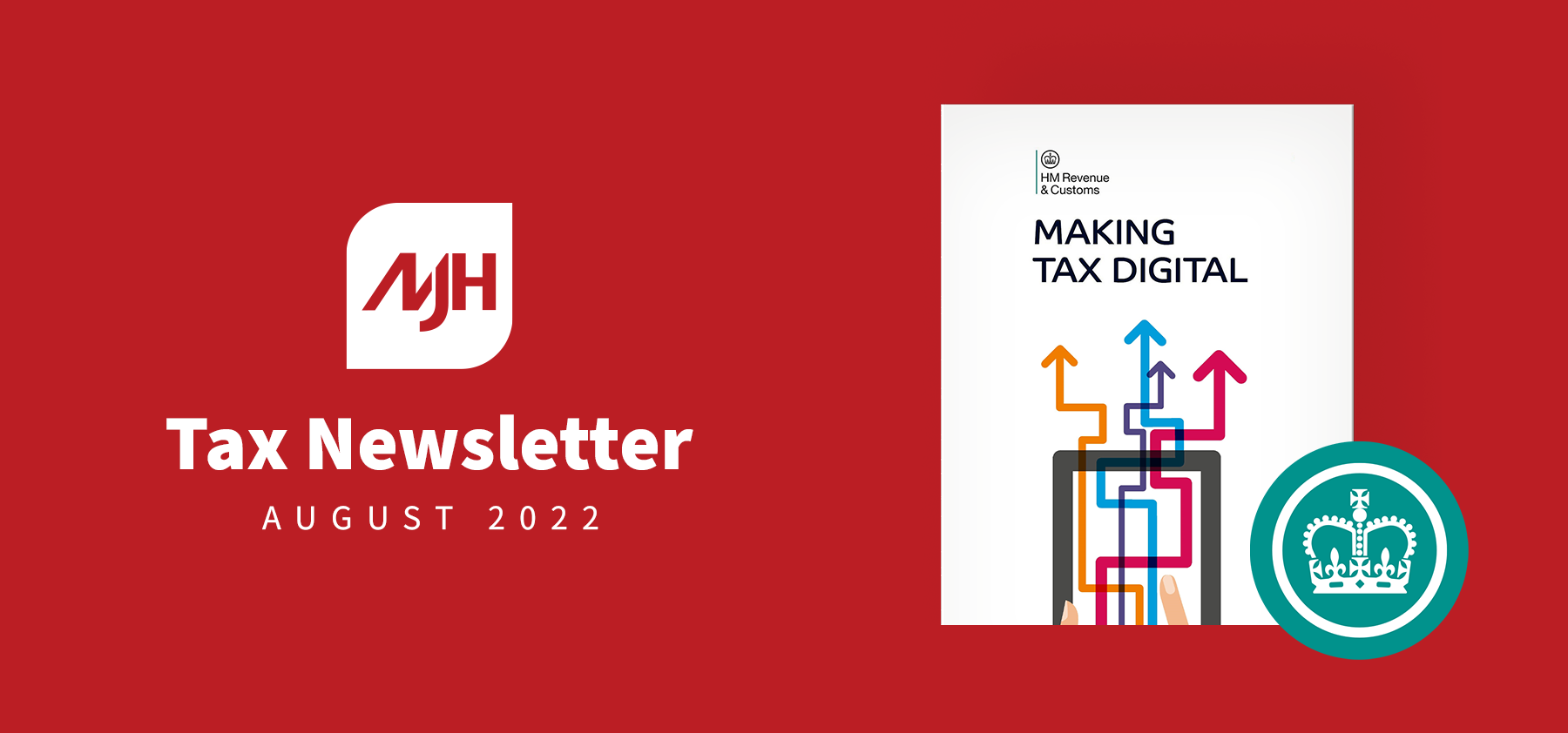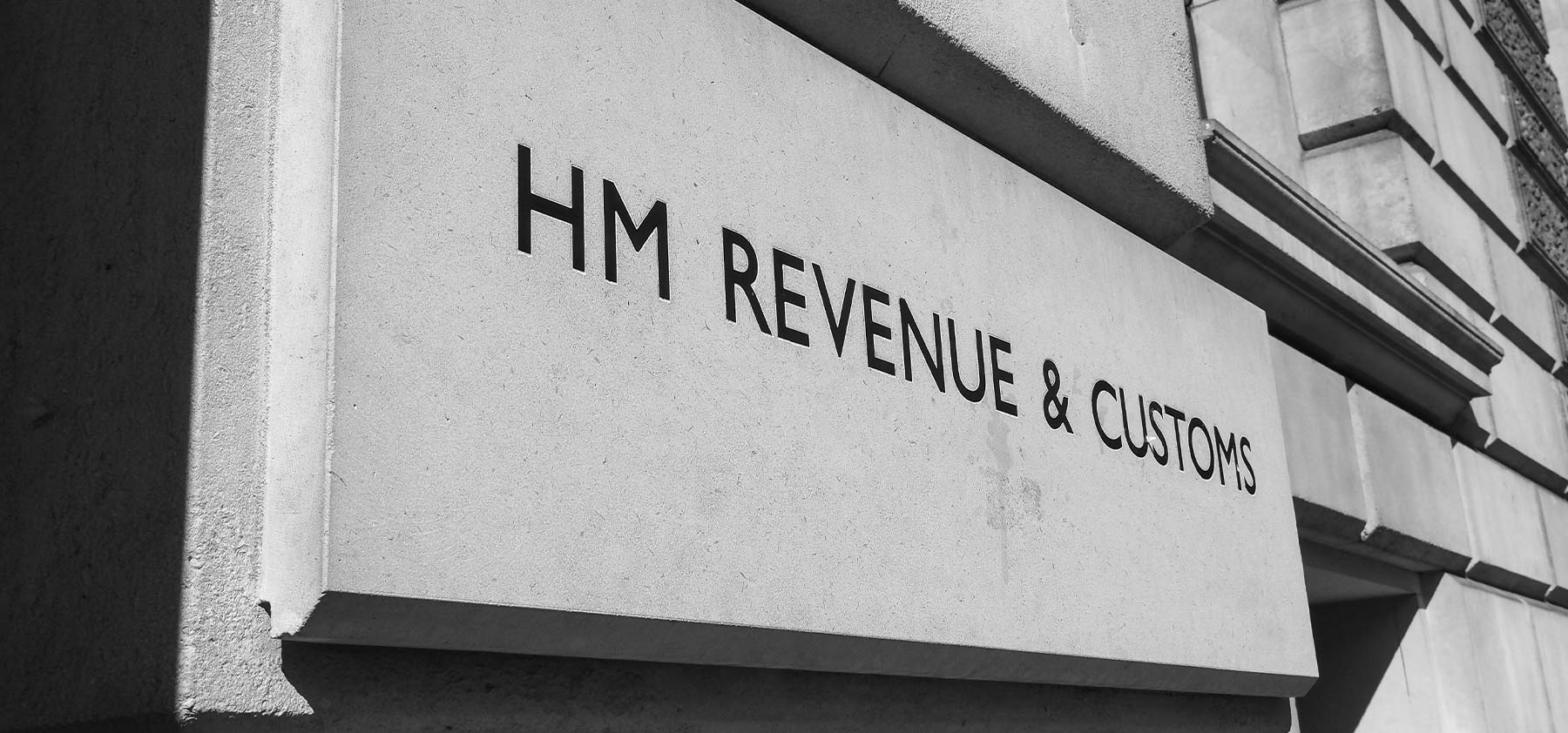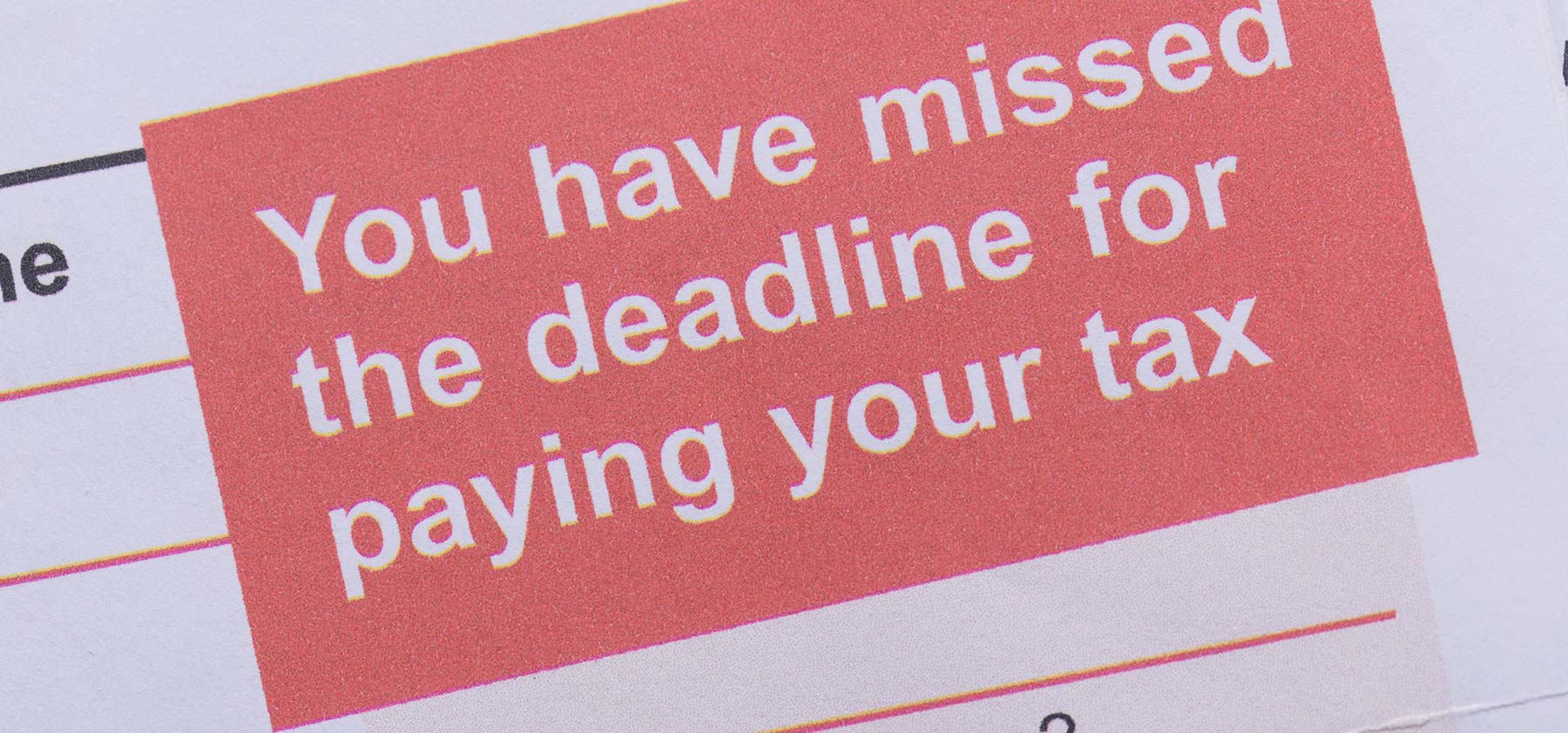
Making Tax Digital – it’s getting nearer.
In exactly two years time the most fundamental change to the administration of the UK tax system for at least 20 years will have commenced. Making Tax Digital for income Tax (MTD for ITSA) will apply to all self employed businesses and landlords with business and/or property income of at least £10,000 as from April 2024. The first quarterly updates will be due for filing by 5 August 2024, covering either the quarter ended 5 July 2024, or 30 June 2024 (where a calendar quarter election is in place allowing quarterly updates to the end of the previous month).
To date not much information has been forthcoming from HMRC to the general public about MTD for ITSA and you could be forgiven for thinking that the process had been ‘put on hold’ as implementation has been delayed at least twice. However, on 1 July 2022, HMRC published draft legislation for consultation. These draft notices provide additional information regarding:
- the use of software integration with HMRC’s systems
- the information that will be required when submitting a quarterly update or end of period statement; and
- retail sales elections.
Further guidance will apparently be published later in the year explaining how HMRC intends MTD for ITSA to work in practice, including how accounting and tax adjustments should be made.
What is MTD?

As a reminder – businesses that are VAT registered are already within the MTD system (MTD for VAT) requiring VAT returns to be submitted digitally using MTD compatible software (paper records no longer being allowed). When the system has been fully utilised it will be mandatory for almost all businesses, landlords, partnerships and companies with income greater than £10,000 to use software or a spreadsheet to keep their accounting records. Self employed business and landlords will be brought into the system as from April 2024 (MTD for IT), general partnerships in the tax year beginning in April 2025 and it is intended that companies will be joining in April 2026 (although the rules for MTD for CT have not been published as yet).
The requirement will be to submit updates to HMRC each quarter directly from accounting software, within one month of the end of each quarter. Once the quarterly summary has been submitted, the system will estimate of the amount of tax due — the idea being to help the taxpayer plan for their forthcoming tax bill more effectively. Submission of an ‘End of Period’ statement (EOPS) will also be required which will finalise the tax position of the trade or business. It will be on this form that any tax and accounting adjustments will be made (e.g. claim for capital allowances).
A further and final declaration will bring together all information required to calculate the final tax liability, including the information shown on the EOPS and any other non-MTD income (e.g. dividends and interest). This final ‘return’ will have the same submission and payment date as now – i.e. 31 January following the relevant tax year. A key difference between the year-end declaration and a current tax return will be that HMRC intends to pre-populate some of the return figures e.g. bank interest, income from employment, pensions, etc.
An important point to note is that in a publication issued by HMRC on 1 July 2022 (Notices made under regulations 3, 8, 12 and 16 of the Income Tax (Digital Requirements) Regulations 2021 (SI 2021) No. 1076)) it was announced that sole trader and landlords required to join MTD for ITSA with income under the VAT threshold (currently £85,000), will be able to submit three line accounts (i.e. a total figure for income, a total for expenses and a final total). Those businesses over the VAT threshold will be required to submit income and expenses by category with property income split between UK and overseas, Furnished Holiday Letsand other types of letting. Furnished Holiday lets will be split into UK and EEA holiday let businesses.
Practical Point
April 2024 may seem a long way off but preparation will be key. There will be penalties for late or non submission of the quarterly updates which will work in a similar way to speeding fines, with a point added each time a deadline is missed.
Where does HMRC get its information from?

With tax revenues down and a significant budget deficit arising from the Covid-19 pandemic, it will not come as a surprise to learn that HMRC are looking to undertake more enquiries into taxpayer’s affairs than ever before. For example, HMRC has a specialist ‘Offshore Co-Ordination Unit’ department staffed with analysts, technical tax experts and experienced investigators.
However, not only persons with offshore interests can attract HMRC’s unwanted attention. The ability of HMRC’s Connect database to identify links between businesses, shareholders, properties, families and across different government departments is increasing in its sophistication such that anyone who has not declared all of their income could become subject to an enquiry; the majority of cases (over 90%) are initiated by information and analysis generated by Connect. Therefore if a request for information is received, it is more than likely that HMRC already has some information indicating non declaration for which the taxpayer’s input or confirmation is required. If non compliance is found penalties can reach 100% of the amount undeclared plus interest.
The reason for the enquiry will always fall into one of the following three categories:
- where some figures on the tax return do not match with other information HMRC has at their disposal
- A late submitted return (enabling a longer enquiry time), or
- HMRC has received a ‘tip off’.
Possible leads
HMRC obtain its information from various sources feeding into HMRC’s Connect computer programme which incorporates analytical tools using analytical methods. The software looks for keywords or phrases such as ‘luxury holiday’ or ‘business’ on social media sites, checking names, phone numbers, addresses with information declared on tax returns submitted. Discrepancies can lead to an investigation.
For example, the Land Registry is one of the prime sources for enquiries into landlords and second homers tax affairs. Information is checked against voting and other Local Authority registers, identifying not only purchasers of properties but also whether the properties have been let. If the properties have been let but nothing is shown on the tax return (even if a loss is made the income still needs to be declared but not if the property income is less than £1,000) that may result in HMRC sending out an enquiry letter. Information can also be obtained from letting agents who can be issued with a notice to provide details of gross rents received for clients in a tax year, on a per-property, per-client basis. Even information obtained from a local authority Planning Department showing the purpose of a property acquisition can be checked. If a purchase is shown to have been made and an application made for improvements subsequently, then this could be seen as renovation before letting. Interest-bearing accounts opened to take the income from lettings, for example, are a source of information for HMRC, as are details of insurance receipts.
Online platforms/intermediary sites such as Airbnb, eBay, or building trades ratings/listings are reviewed as well as credit reference agency data and applications to mortgage providers. Google Maps is known to be a source of information for HMRC investigators. The site is used to assess whether a taxpayer’s property and lifestyle are consistent with the level of declared earnings (e.g. a new car parked outside a property or a large extension pictured that does not support the income declared on a tax return). Businesses set up during the pandemic (possibly from home) that advertise predominantly on social media but have not been declared on the 2020/21 and/or 2021/22 tax returns may also be of interest to HMRC. The usual cash businesses such as private taxi firms, pubs, corner shops and takeaways are vulnerable to enquiry but anyone not declaring all of their income could receive an enquiry letter.
‘Deliberate Defaulters’
Taxpayers with undeclared income of more than £25,000 who have received penalties for deliberate errors in their tax returns or for deliberately failing to comply with their tax obligations are termed ‘Deliberate Defaulters’. Such taxpayers have their name and address published online.
Practical point
Consider purchasing Tax Investigation insurance which will pay your accountants fees should you be subject to an enquiry.
Are directors liable for their dissolved company’s unpaid bills?

On 15 December 2021 the government passed an Act which at the time was effectively ‘under the radar’ for many company directors but could have far reaching implications should their company be dissolved with outstanding tax liabilities.
The Rating (Coronavirus) and Directors Disqualification (Dissolved Companies) Act 2021 was enacted to enable the Insolvency Service to apply for a court order requiring a former director of a dissolved company, who has been disqualified, to pay compensation to creditors who have lost out due to a director’s fraudulent behaviour. The ‘Rating’ part of the Act was passed to ensure that the coronavirus pandemic cannot be used as a reason for ‘material changes of circumstances’ for business rates appeals. The ‘Directors Disqualification’ part was passed to help HMRC and the Insolvency Service tackle the practice of directors dissolving companies to avoid repaying the Government backed loans put in place to support businesses during the Coronavirus pandemic but the legislation is intended to help all creditors.
What has changed?
For a long time HMRC has been able to chase directors of dissolved companies for up to six years from the date of dissolution for unpaid tax, but if they believe fraud has taken place or that the directors have been negligent in some way, they can chase for up to 20 years. The Insolvency Service has also long had powers to investigate (and disqualify) directors of both live and insolvent companies. However, directors of a dissolved company could not be held to account unless that company was first restored to the Companies House register which needs to be done through the courts. This proved a time-consuming and cumbersome procedure which inevitably resulted in abuse. It is easy for a company’s owners to dissolve their companies (along with all the company debts) via the Strike off procedure instead of going through a formal liquidation process, thereby avoiding scrutiny. It is also easy to dissolve the company but instead of complete closure carry on the same business through a new company (known as ‘pheonixing’).
The new legislation extends the Insolvency Service’s powers enabling investigation of directors of dissolved companies without having to restore the companies to the register first. If a director’s actions have caused loss to creditors the Insolvency Service can also apply to the court for a compensation order against the director personally.
‘Weakness’ in the new process
You can object to a limited company’s application to be Struck off if you are a shareholder or other interested party, such as a creditor, and have reason to stop the application (e.g. you are owed money). The ‘weakness’ in the new Act is that it remains the job of a creditor to raise concerns about a dissolved company’s director’s behaviour with the Insolvency Service. Therefore the absence of a liquidator or administrator in the dissolution process means that some directors may not be brought to account if no-one objects to the company’s closure. In addition, once a company is dissolved, there is no process by which a liquidator or administrator can investigate the conduct of directors. Therefore, it is likely that only extreme examples of misconduct will be investigated.
Practical point
Companies House automatically notifies HMRC of any application to Strike off a company and will not allow the process to proceed if tax liabilities are outstanding. HMRC can make company directors and others ‘joint and severally liable’ for the company’s tax liabilities but only where a penalty for facilitating avoidance or evasion has been charged (or proceedings to recover such a penalty have started).
Reporting residential property gains – the timing is tight

A chargeable gain may arise on the sale, disposal or transfer of a residential property if that property has not been the seller’s only or main home throughout the period of ownership. Here we are looking at investment property, such as a buy-to-let, a holiday let, or a second home. Any UK resident, trust or estate who sells or gifts UK residential property at a gain is required to calculate, report and pay any capital gains tax (CGT) due within 60 days of completion of the sale. Companies are not subject to these rules.
Non-UK residents are required to report all disposals of UK land (not just disposals of residential property), whether or not a capital gain is realised. This requirement extends to disposals of shares in ‘property-rich’ entities. An entity is ‘property rich’ if, at the time of the disposal, 75% or more of the value of the asset disposed of derives directly or indirectly from UK land (whether commercial or residential).
Reporting and paying
Reports must be made online via the UK Property Reporting Service, a standalone service only accessed on a specific page on the GOV.UK website. A Government Gateway user ID and password are needed to set up a ‘Capital Gains on UK property account’. There is the facility to submit a paper return if the taxpayer is ‘digitally excluded’ – a specific form can only be obtained from HMRC direct.
Where the individual is also within self-assessment, it will be necessary to report the disposal twice – once within 60 days and again on the relevant self-assessment (SA) return. The property account can also be used to make payment and view previous returns submitted. The amount payable must be the best estimate of the tax due at the date of sale. Losses realised previously in the tax year or brought forward can be taken into account, as can the annual exempt amount, if this has not been used against other gains.
Amendments and refunds
Amendments to the property return can only be made in specific circumstances (e.g. the estimate of the individual’s income changes so the rate of CGT which applies is changed or the value of any figure which has been estimated or apportioned becomes known). For those individuals who also complete a SA return, final adjustments are made on that form.
Because sometimes the amounts to be declared may not be finalised by the 60 days, it is possible that a repayment may arise especially if losses are realised on later disposals in the tax year. Such repayments (termed ‘initial overpayments’) can be offset against other taxes payable on completion of the SA return. If after offset an overpayment remains then, once the SA return has been submitted, the taxpayer will have to ring HMRC to arrange repayment.
If the taxpayer disagrees with HMRC’s calculation, they will be asked to supply supporting evidence such as a calculation/computation. The taxpayer does not have to supply the additional information but it would be in their interests to do so. In contrast, the paper return requests evidence such as ‘calculations, invoices, receipts or valuations’ in all cases.
Practical Point
It is important that the property return is completed before the SA return even if the property return is submitted late, as the Property Reporting Service does not permit property returns to be filed after submission of the SA return.
August Questions and Answers

Q. I have prepared my 2022 tax return for submission but on reviewing previous returns I found that I made an error when completing the 2018/19 tax return, resulting in an overpayment of tax. Can I get my money back?
A: The self-assessment rules limit the time you have to claim tax relief. As an individual or company the time limit for submitting an amended return is usually one year from the deadline for submitting the return you want to amend. So to amend the 2020/2021 return, for example, you have until 31 January 2023. It is too late for the 2018/19 return to be amended but a claim can be made for ‘overpayment relief’.
Except where legislation specifies to the contrary, the general rule is that relief must be claimed within four years from the end of the tax year to which the claim relates for personal taxes, and four years from the end of the accounting period for corporation tax. Therefore so long as this claim for the year 2018/19 reaches HMRC by 5 April 2023 you can claim. The claim must be in writing.
Q. I am the director of my company and one of my employees is getting married next month. I want to pay for the cost of the honeymoon night and taxi that they will use to travel to the airport. The company has an account with a local taxi business. Are there any tax implications for the employee and can the company claim tax relief?
A: Generally, any gifts made by a business to an employee are taxable as benefits in kind unless covered by a specific exemption (or are a ‘trivial benefit’). This is the case even though the reason for the gift is not business related (as in this instance). The reason being that where there is an employer-employee connection, the gift is employment-related even if the reason for the gift is a private one.
Where a benefit in kind is charged then the company will be able to claim tax relief on the cost to the business.
Q. A couple of years ago I self-built a bungalow in my back garden intending to sell on the open market but since then my son and daughter in law have split up so I am now looking to sell the property to him but at a lower than market value. The bungalow cost overall £280,000 and is now valued at £520,000. My son can only afford to pay me £375,000. What are the capital gains tax (CGT) implications?
A: When you gift an asset to anyone, or when you transfer an asset to a connected person (e.g., a son – as in this case), for CGT purposes the asset is deemed to go across at present market value. The amount actually paid is ignored. Therefore, since the property is currently worth £520,000, and it cost £280,000, there is a capital gain of £240,000. However, there may be a value to allocate for the actual land underneath the property being transferred which may be included in the calculation.
August Key tax dates

1 – Individual taxpayers who have not paid their remaining tax liabilities for 2020/21 face a further 5% penalty, in addition to the 5% penalty suffered on amounts outstanding at 1 March 2022.
Corporation tax payment 31 Oct 2021 year end
2 – Employers must submit Form P46 (Car) to report new cars provided during the quarter to 5 July 2022.
7 – Electronic VAT return and payment due for VAT quarter ended 30 June 2022.
19 – CIS payment and submission
31 – Corporation tax return submission – 31 August 2021 year ends
 Book a No-obligation Call or Meeting
Book a No-obligation Call or Meeting




 Book a Call or Meeting
Book a Call or Meeting

